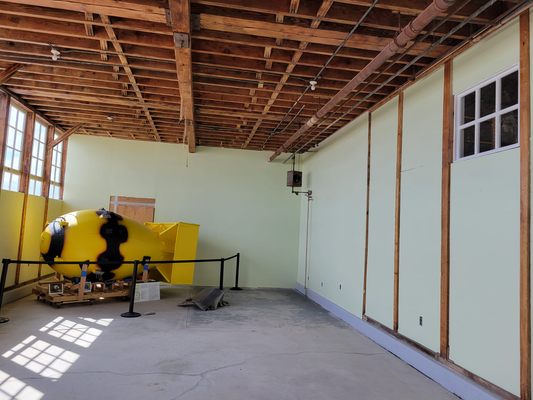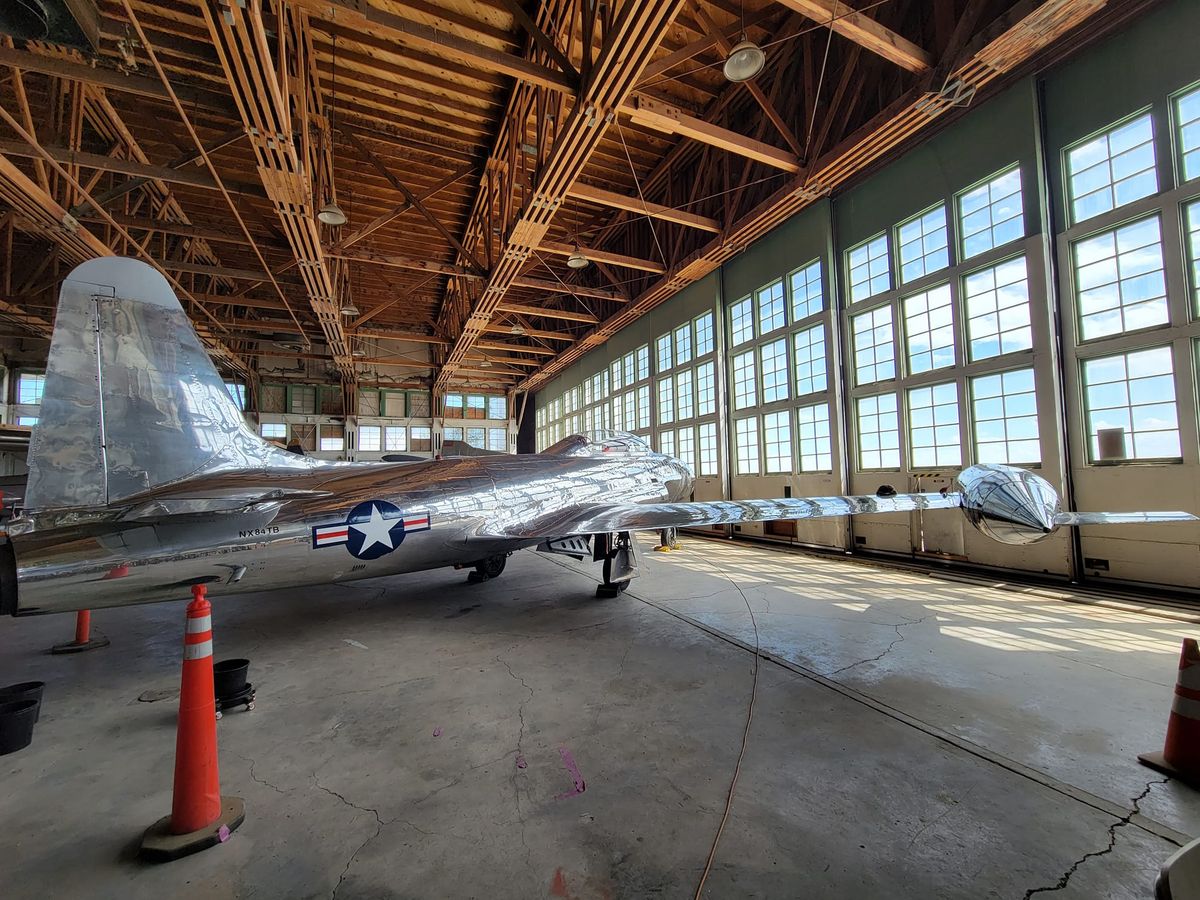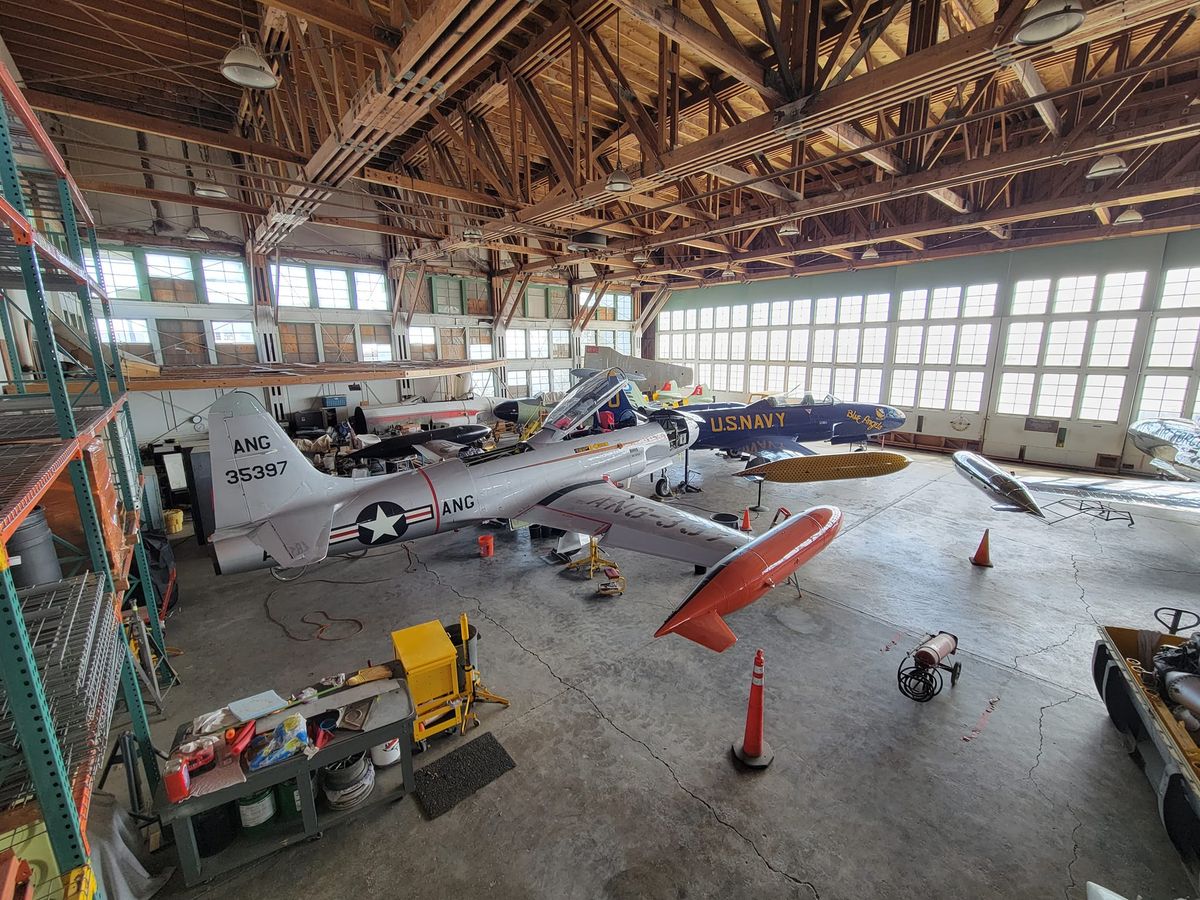About
What's the value of an atomic bomb if it can't reach its target? At the height of the Manhattan Project, military planners and engineers devised a way to deliver the world's first superweapons via retrofitted airplanes. Wendover Army Airfield, a remote installation in the Utah salt flats, was selected to implement this design. A massive steel-clad hangar concealed work on the secretive "Silverplate" B-29 bombers as crews trained for the first mission of its kind. Above the hangar, Colonel Paul Tibbets would hold conversations in his office that would help decide the course of modern history.
This ominous chapter in world affairs is only one aspect of Historic Wendover Airfield. From rocket development to nuclear deterrence, this inconspicuous base has played a masked role on the world's stage. A closer look reveals that it is the best-preserved example of a World War II Army Air Force installation anywhere. Today, the sprawling complex is in various states of preservation.
A tour typically starts with the restored Officers' Service Club. The new interior incorporates its 1940s appearance with museum displays and informational placards. There are numerous artifacts showcased which range from aircraft components and weapons to flags and uniforms. The main restrooms and gift shop are also located here.
Moving towards the runways is the monumental Control Tower—which is open to adventurous stair-climbers—and the Operations Building. The latter is shared with Tooele County since the airport is still active. More exhibits can be found throughout the first floor here.
Buildings awaiting restoration are all over the former base. You can drive most of the old streets and gawk but just be mindful of private property signs, security gates, and fences. A C-123 “Provider” airplane, which starred alongside Nicolas Cage and John Cusack in “Con Air,” is displayed behind a fenced area that’s open during museum hours.
Guided tours from the museum access areas of the airfield that are typically restricted. For example: wooden hangars abutt the concrete flight line and some host ongoing aircraft restoration projects and maintenance. The large B-29 hangar—dubbed the "Enola Gay Hangar" after Col. Tibbets' aircraft—is also on the tour. Outside, a stately C-54 "Skymaster" transport airplane underscores the size of the steel structure. Not far away is the Fire Station, which was one of the last buildings that the military occupied in the 1970s. The former two structures house an impressive collection of vehicles (and a few planes, of course).
A new mockup of the Fat Man atomic bomb has arrived at the Enola Gay Hangar for display. While training to fly the modified bombers, the ballistic characteristics of the new superweapons were also tested. Early versions needed adjustment to slow the rate of fall. A piece of an original Fat Man casing dropped in the Utah desert is displayed next to the faithful replica.
Ancillary to the row of hangars is the Norden Bombsight Storage. The bombsight was a piece of optical technology that was perhaps second only to The Manhattan Project in terms of secrecy. From high altitudes, a skilled bombardier could use it to strike with devastating accuracy. During World War II, the bombsights had to be removed after every flight and securely stored. This building had its own backup generator and was guarded around the clock. Thus, in a way, it was completely self-contained from the rest of the base. The interior has a row of fireproof safes which provide insight into how the Army protected its ace in the hole. Looking closely at the inside of the safe doors, you’ll see legible construction dates!
Tours culminate with the Atomic Bomb Loading Pit which is arguably one of the most important open pits in the world. It was here that practice bombs were loaded into bombers in preparation for the real deal. A similar pit still exists on Tinian Island in the Pacific where the atomic bombing missions departed from.
The museum staff at Historic Wendover Airfield seeks to tell a comprehensive story. Japanese artifacts from the atomic bombing sites are being acquired and the postwar history of the installation will be expounded upon in the future. This place isn't purely a "war museum" but rather a tribute to aviation and those who gave their lives to advance it. To this end, a memorial is planned at the site for the pilots who perished stateside due to mishaps.
Related Tags
Know Before You Go
Despite its relative remoteness, Historic Wendover Airfield is easily accessible from I-80. It's about two hours west of Salt Lake City and right on the Nevada border. Just look for Exit 1.
If you have access to a private plane, this place is an airport after all! The airport code for Wendover is ENV. However, be mindful of restricted airspace bordering the field and its vicinity.
Community Contributors
Added By
Published
October 13, 2023


























































